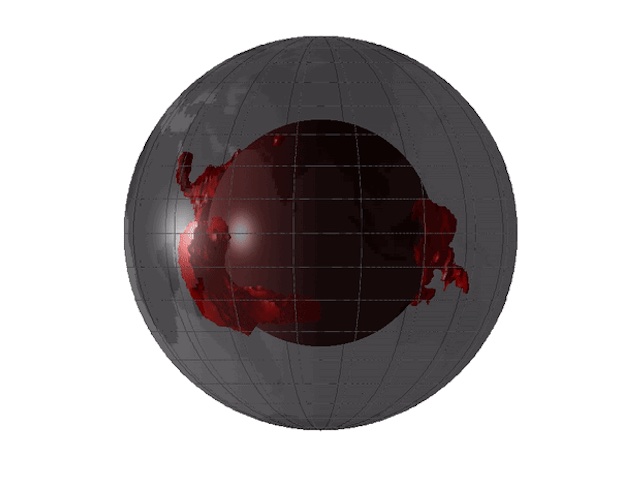Blobs Underfoot
May 18, 2022
Two continent-sized mountains of heated, compacted rock live in the planet’s belly midway between your feet and the core, yet scientists know nearly little about them. Large low-shear-velocity provinces are the technical name for these strange hunks of rock, because seismic impulses shuddering across Earth usually slow down while traveling over these formations. A fascinating photograph published in an article on Eos (the official news site of the American Geophysical Union, or AGU) provides one of the most comprehensive images yet of these rocky abnormalities, which most scientists refer to as “blobs.”
Geophysicists have known about the blobs since the 1970s, but they are still far from being understood. This is self-evident: The blobs start millions of miles below the surface of the planet, where the planet’s stony lower mantle meets the molten outer core. The Pacific Ocean is home to one blob, while Africa and parts of the Atlantic are home to the other. Both are huge, protruding halfway through the mantle and measuring continents in length. Each blob spans nearly 100 times higher than Mount Everest, according to the International Space Station would have to maneuver around them if they were on the planet’s surface.
Scientists have noted that the blobs’ huge, cascading plains have been compared to sand mountains or interconnecting pits of gravel, but scientists disagree over whether they’re lower- or higher-density than the surrounding mantle.
How the blobs effect geological operations like plate tectonics and volcanism, if at all, is also a mystery. A more recent map of the formations, shown at the 2018 AGU annual conference by University of Oxford PhD student Maria Tsekhmistrenko, reveals that the blobs’ tips may branch into plumes of hot material that brush up against volcanic hotspots close under Earth’s surface. What exactly does this imply? Nobody knows. It may take many more decades to fully comprehend the mystery at the planet’s core. Fortunately, the blobs don’t appear to be moving.
